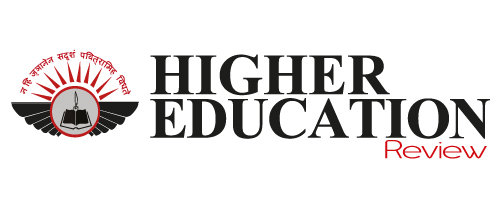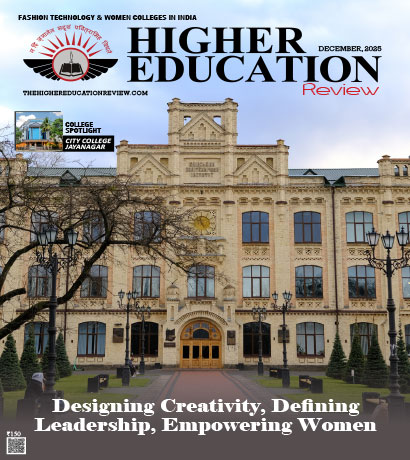Future of Cost and Management Accounting in the Age of AI and Automation
 Lavanya Kanduri, Chairperson & Dean, Manson Centre of Excellence, in a conversation with Higher Education Review, discussed how management accounting education is changing in response to technological disruptions, along with the industry developments. She talked about the incorporation of the AI-driven cost models, adaptive learning structures, and digital tools into the management accounting curricula. Lavanya highlighted the importance of interdisciplinary collaboration, and emphasized that students must be prepared with future-ready skills through applied learning and industry partnerships.
Lavanya Kanduri, Chairperson & Dean, Manson Centre of Excellence, in a conversation with Higher Education Review, discussed how management accounting education is changing in response to technological disruptions, along with the industry developments. She talked about the incorporation of the AI-driven cost models, adaptive learning structures, and digital tools into the management accounting curricula. Lavanya highlighted the importance of interdisciplinary collaboration, and emphasized that students must be prepared with future-ready skills through applied learning and industry partnerships.
With extensive cross-sector experience in academia and corporate settings, Lavanya is a dual post-graduate with an MBA in International Finance and an M.Com who is also a Fellow of The Institute of Cost and Management Accountants of India and an MC Member of their Hyderabad Chapter, currently contributing at Manson Center of Excellence.
How can management accounting educators incorporate emerging technologies such as machine learning, RPA and data visualization tools into their teaching frameworks?
Emerging technologies such as RPA, machine learning and data visualization models are bridging the gap between theory and digital practice. The curriculum should include practical exposure to digital tools such as ERP platforms with RPA simulations, as well as hands-on projects with tools such as Power BI, Tableau, and Python. To enable lab-based learning and allow students to understand not just the implementation of digital transformation in finance, but also the underlying reasons for its importance, partnership with technology partners is required.
What foundational concepts should remain central to accounting education and what needs to be replaced or reimagined?
Core concepts such as cost behavior, break-even analysis, marginal costing, and responsibility accounting remain relevant in today's education. However, static budgeting tools, and analytical techniques such as manual variance analysis must move forward. Education must incorporate adaptive costing models, agile budgeting, and AI-assisted forecasting. The core concepts are still crucial for financial decision making; also new techniques and methodologies must be put in place with AI-driven tools and technologies. The traditional pedagogies should be complemented with modern frameworks that reflect the evolving business environment.
What interdisciplinary collaborations such as computer science or data analytics departments can enhance the relevance of cost and management accounting programs?
The future of accounting education is inevitably interdisciplinary. Thus, partnership with data science, computer engineering, and behavioral economics are the essential in preparing students for hybrid roles. Joint programs or electives in areas such as programming for finance, data ethics, and AI-enabled financial modelling, can empower students with a more comprehensive and agile mentality. Moreover, exploring various dual specialization opportunities and joint certifications to develop future-ready professionals offers significant long-term benefits.
What strategies should academic institutions adopt to ensure students gain value-added future-proof skills in cost management?
Educational institutions should move beyond rote learning and prioritize applied learning. The philosophy of learn, apply, lead ensures that students undergo a continuous cycle of classroom learning followed by real-time application. Incorporating case studies, industry mentorships, and certifications in emerging areas such as ESG cost modeling can significantly enhance the student's employability. Soft skills such as negotiations, storytelling, and ethical leadership are crucial as technical expertise, especially as these are qualities that AI cannot replicate.
What role should open source tools like Python, Power BI, and or plain equipping students with practical data analytics capabilities in the context of cost control and performance evaluation?
Cost control and tools such as Power BI go hand in hand, especially in the context of ongoing innovations. Understanding cost behavior is crucial when using tools and techniques such as Tableau, Python, and others that enable automating workflows through SAP, Oracle, and ERP systems. Educational institutions should collaborate with technology partners to offer students a deep understanding of cost control and cost reduction techniques, ensuring they are equipped with the skills needed for the evolving financial landscape.
What are the opportunities that exist for academic institutions to collaborate with tech companies or ERP vendors to co-develop a real-time costing solution or decision support tools?
AI and AI-related educational tools are leading the way in the future. The real synergistic advantage can happen when educational institutions partner with organizations to embrace the latest tools and technological approaches to advanced learning. By integrating these systems into practice, students move forward with that knowledge to achieve the impactful results. Additionally, this strategy provides benefits for students and is also valuable and beneficial to business growth since organizations become more efficient and data-driven.
What roles can academic institutions play in researching and teaching adaptive cost models suitable for dynamic business environments?
Academic institutions play a crucial role in researching and adapting cost models through developing innovative approaches and interdisciplinary collaboration. These institutions are also responsible for developing the skill sets of students to adapt to prevailing industry developments through real-world experiences. Moreover, institutions can develop the curriculum and teaching methods that integrate adaptive cost modeling into the business environment.
Developing specialized courses focused on adaptive cost modeling can provide students with in-depth knowledge while encouraging collaboration between various departments. In addition, highlighting practical applications such as simulations and real-world projects is important. Institutions should promote a continuous learning mindset and adaptability for a dynamic global landscape.

